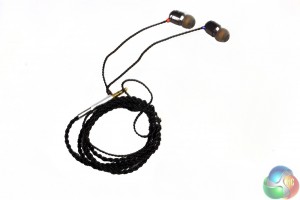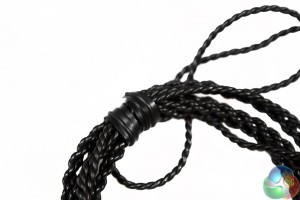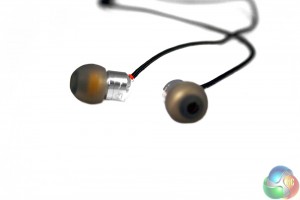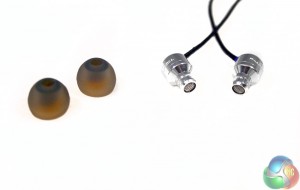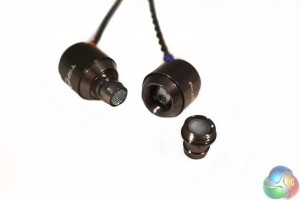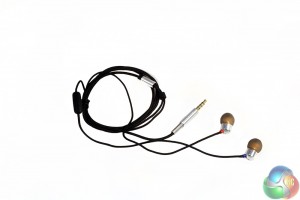
The headphones themselves are very similar from the exterior. Both feature stock earphones (though the Deltas are larger) with silicon tips and long, carefully wrapped, black cables ending in a silver and gold 3.5mm jack. The only obvious difference is the material the cables are wrapped in. While the Hyperion's have a traditional rubber coating, the Deltas has something quite different.
The Delta's have a multi-weave cable which feels very tough and durable, as well as having a slightly more enthusiast look compared to traditional rubber or plastic cabling. Better yet, it appears to have almost no cable memory, so you need not worry much about getting this cable twisted up.
It too comes with full aluminium housings for the earphones and 3.5mm jack and there is a spring that extends out from the audio jack to give it additional flexibility and prevent shearing.
The jack is also 24 carat gold plated.
The Delta headphones have an aluminium housing for the earphones, with small red/blue tags with R/L on them to let you know which earphone is designed for which ear. The stock silicon tips are easily removed and show you the tuners underneath. These ones however, are not removable.
That is very different with the Delta earphones. A quick screw motion is all that is required to take them off and the alternatives can be swapped in just as easily. The whole process takes seconds, so it is not beyond the realm of possibility to switch them out regularly. It is not something you would want to be doing all the time, but changing tuner based on your mood is perfectly viable.
The three tuners offer a more bass heavy sound with the silver tuners, a ‘natural' sound with the gunmetal greys and a more treble orientated soundscape with the purple tuners. The additional golds mute much of the bass, but give a very vibrant sound to other aspects of the frequency spectrum.
 KitGuru KitGuru.net – Tech News | Hardware News | Hardware Reviews | IOS | Mobile | Gaming | Graphics Cards
KitGuru KitGuru.net – Tech News | Hardware News | Hardware Reviews | IOS | Mobile | Gaming | Graphics Cards


